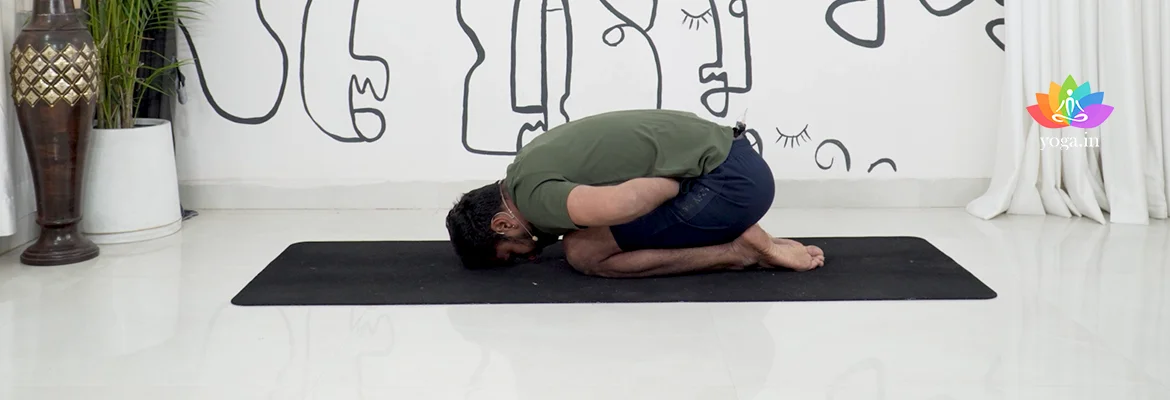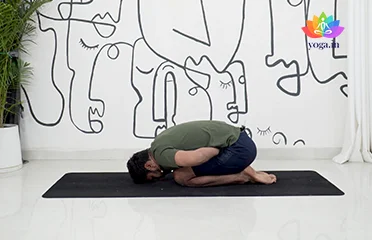Sit in Vajrasana.
Introduction to the Asana
The Sanskrit name is derived from Manduka (मण्डुका) meaning frog and asana (आसन) meaning posture or seat.
Step to get in the pose
-
-
Make fists wherein the thumbs should be inside.
-
Place your fists at the naval region.
-
Inhale slowly and deeply.
-
Exhale, bend forward and put maximum pressure on the naval area through your fists.
-
While bending forward, chest should touch your thighs.
-
Look ahead with open eyes like a frog.
-
Maintain the pose as long as you can.
-
Inhale slowly while maintaining the pose.
-
Come to Vajrasana with a deep inhale.
-
Perform it 3 to 5 times.
Common mistakes and pitfalls
-
Holding your breath.
-
Forcing yourself into the pose.
-
Not engaging your core and keeping the spine elongated.
-
Rounding your back.
Benefits
-
Stretches the groins, inner thighs, and hips.
-
Opens the chest and shoulders.
-
Strengthens the back muscles.
-
Reduces fat from thighs, belly and hips.
-
Reduces back & sciatica pain.
-
Stimulates the pancreas, digestive organs and abdominal organs.
-
Alleviates diabetes.
-
Boost blood circulation and help manage blood pressure.
-
Relieves from depression, anxiety and stress.
-
Cures insomnia.
Contraindication
-
Avoid in case of any injuries or surgeries of the neck, knees, hips, groin, ribcage, shoulders, ankles, lower back or abdomen.
-
Avoid during pregnancy and Menstruation.
-
Avoid if suffering from peptic ulcer or hernia.
-
Avoid in case of insomnia, migraine & high blood pressure.




